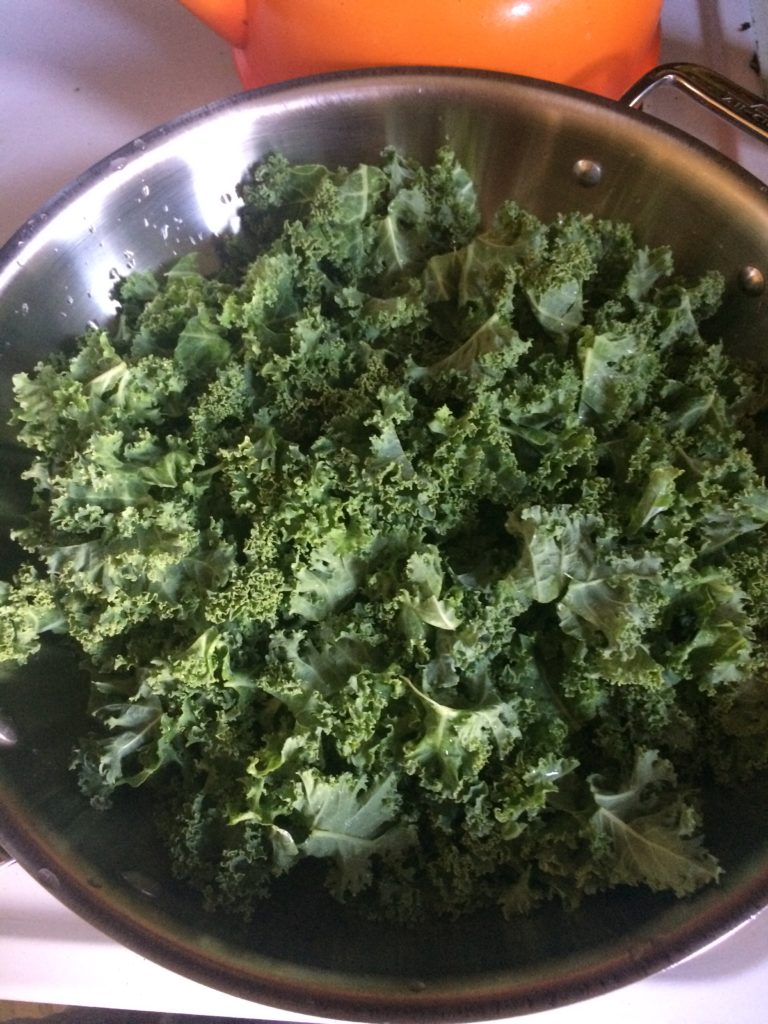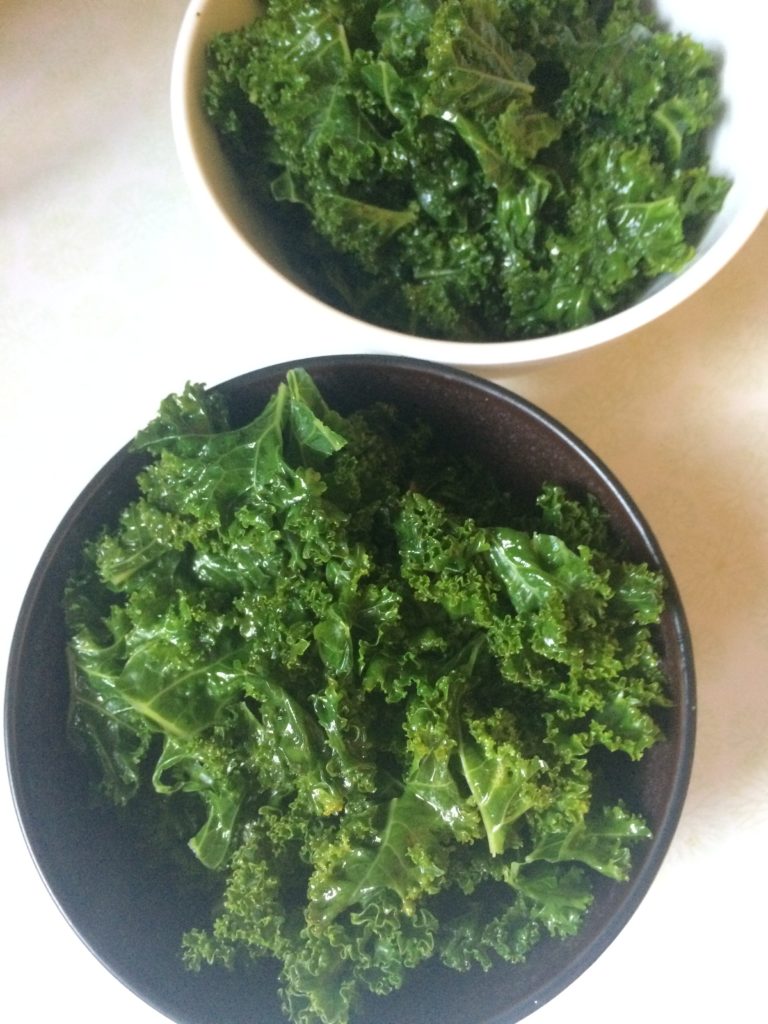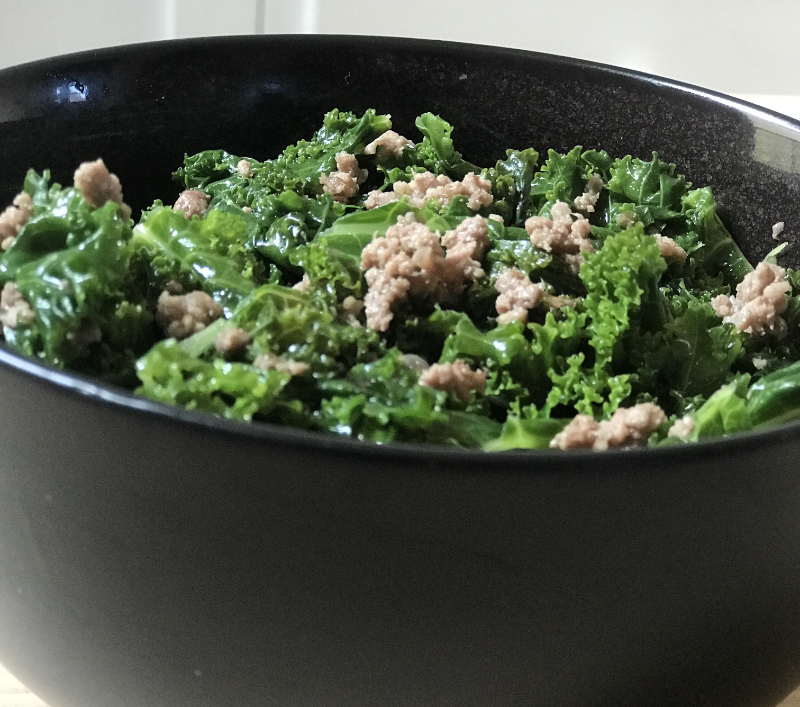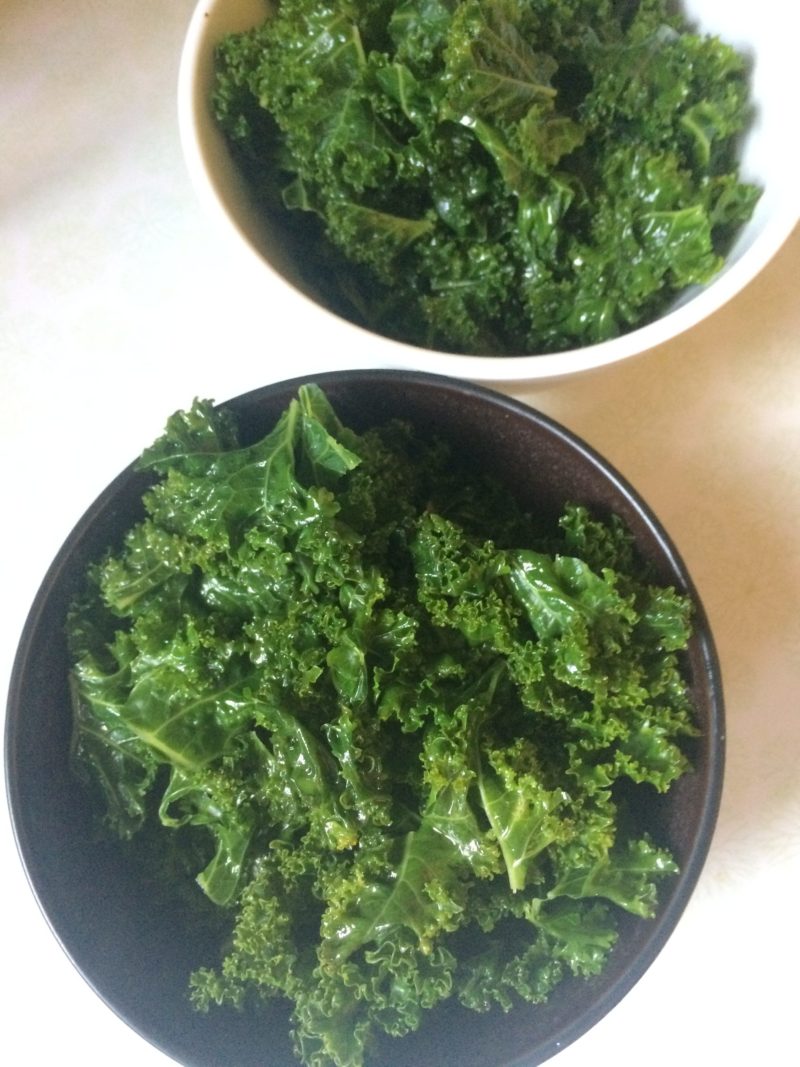This is a really simple recipe for making vegetables, but it is hard to put a name on it. It isn’t sautéing, sweating, steaming, braising or frying. It is kind of a mix of them all.
You will notice that the recipe lacks a lot of specifics. This is because it is a general way of cooking vegetables, not a specific recipe that makes a set number of servings.
Green kale, green beans, and brussels sprouts work really well with this method, so you might want to try those first. Green kale can be washed and torn/cut into bite-sized pieces. Green beans can be cut into bite-sized pieces or left long. Brussels sprouts are best cut in half to give a nice flat surface that can be browned.
Once you have done it a few times, this recipe really becomes easy. You can prep it in advance and just turn on the stove when you are ready to cook. When cooking you just have to check in every few minutes, and watch to make sure there is still steam coming from the pan.
Recipe Note:
You will need a large covered frying or sauté pan. For more compact vegetables like green beans, a 10” or 3 quart pan will work. For bulkier vegetables, like kale, or larger amounts of vegetables, you will probably need a 12” fry pan or 4+ quart sauté pan.
Ingredients
A splash or two of olive oil
A vegetable, cleaned and cut/torn into bite-sized pieces
Salt and pepper
Approximately 1 cup of water
Instructions

Add olive oil to the pan. The amount will vary depending on how many vegetables and the size of your pan. You want enough to lightly coat the pan once it has heated, but you will notice that you are putting it into a cold pan. Make a guess and try it out. The olive oil is for cooking but also flavors the final dish.
Add the vegetables to the pan.
Add salt and pepper. Start with about 1/4 teaspoon of each and figure the final adjustment will be made once the vegetables are fully cooked.

Add the water to the pan and cover.
Heat the pan to medium high.
When the water in the pan comes to a boil, steam will begin to escape. At this point you want to check the vegetables every few minutes to see if they are close to the desired tenderness and to make sure the water hasn’t all boiled off. Add more water if the pan is getting close to dry. Little or no steam means you need to add a little water. Also if you hear sizzling, you need to add more water, because the vegetables are now sautéing in the oil. You can stir them to more evenly cook and distribute the salt, pepper, and olive oil throughout the dish.
Once the vegetables are close to the desired tenderness, remove the cover.
You now have two options:
If you would like the vegetables to get a little browned, keep the temperature at medium high and cook off the remaining water. The olive oil should remain on the vegetables, so you can now let the vegetables brown a little bit. Remember to stir frequently to keep from burning. Additional olive oil can be added if needed.

If the vegetables don’t need to be browned, stir them a little to coat them with the remaining olive oil. If there is very little water left go ahead and cook off the water. If there is a lot of water left, cook them until they reach the desired tenderness and then remove the vegetables from the pan.
Add salt and pepper to taste
Additional Notes:
Once you get comfortable cooking vegetables this way, you can adapt the method to all kinds of vegetables and even add a protein to make it a one dish meal. You can even do multiple vegetables in one dish, but may need to add them at different times if they cook at different cooking speeds.
Particularly watery vegetables, like zucchini, often don’t need any added water. When you add them to the pan make sure to stir or toss the vegetables around so they get coated with oil. Cover the pan and every time you check the vegetables stir or toss them. When they begin to stick to the bottom of the pan, they are almost done, and you can remove the lid and stir frequently to finish the cooking.
My favorite options are:

Ground meat. This turns your vegetables into a complete meal. – When the vegetables are done transfer them into a bowl temporarily. Try to keep any excess oil and water in the pan, because these have flavors and nutrients from the cooked vegetables. Add the ground meat (about 4oz per serving) to the pan and cook while stirring over medium high heat. When the ground meat is cooked through, add the vegetables back in and stir everything together. Remove from the heat and add salt and pepper to taste.
Leeks! Adding leeks adds and incredible sweetness and depth to your vegetables. – Cut off the rooty bottom and the dark green leafy parts of the leek. Remove the outermost layer and then rinse the leek with the water running from the white end to the green end. Rinsing in this direction helps to keep the dirt and sand flowing into the sink instead of in between the layers of the leek. Make a cut lengthwise in the leek from where the leek is light green down to the white end where the root was. Look down the length of the split to see if there is any dirt or sand. If you see sand note where, and you will stop slicing the leek before you get there. Thinly slice the leek, starting at the white end and continue until just before where you saw sand or where the leek starts getting dark green and tough. Add these sliced leeks right after the olive oil. And then cook the vegetables as normal.
